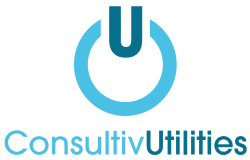
Water Saving Week 2023 is focusing on the role of water usage in energy bills and carbon emissions
Why is water management important for business success?
Effective water management is essential to long-term business success. Water Saving Week 2023 serves as a necessary reminder of this.
Water is life’s most precious commodity. Taking a closer look at your organisation’s water usage can help you become more sustainable and lower your utility bills by identifying clear ways to improve your water usage efficiency.
This year, Waterwise’s Water Saving Week focuses on the cost of living crisis, and the role of water usage in both energy bills and your carbon footprint. Understanding more about the way your business uses water can help you save in the long run and do your part for the planet.
The Importance of water management for your business
Climate change is the issue that defines modern society, and every business feels the pressure to protect the environment. Reducing your energy usage is one of the simplest ways to put sustainability into practice as a modern business, and this includes managing your water usage.
Water is a precious resource, which means using less water is better for the environment. The collection, treatment and supply of clean water demand sustainable energy, and how you choose to acquire and use water in your business has a direct impact on your carbon footprint.
The Energy Savings Trust reports that each person uses around 142 litres of water per day, and this number rises further for businesses. Reducing your consumption can impact your business’s carbon footprint and broader environmental impact, resulting in lower water bills over time.
Managing your commercial water usage
Understanding and managing your water usage can make significant positive differences within your organisation. Even simple steps towards better water management can save you significant costs in the long run, and make you a more sustainable business overall.
Smart meter
A smart meter allows you to closely monitor your water consumption, revealing how much you’re using in real time, and identifying areas that could provide potential savings. Smart meters could also alert you to any leaks.
Water maintenance
A water maintenance check can highlight any issues with old or unmaintained equipment, as these can increase your water usage with no benefit to you. You should also avoid running appliances like dishwashers on half-loads in the workplace. Take a critical eye to your workplace landscaping too, if you have water features.
Water saving measures
Investing in new technologies and water-saving measures can significantly cut your water usage. These include water butts to collect rainwater off rooves, motion sensors on taps, and water-saving devices on toilet cisterns.
A community effort
One person cannot make the changes necessary to make a difference to your commercial water and energy levels. Keeping employees informed and engaged on the subject of water management can make better water usage a community effort. Switching to a new supplier can open you up to better rates and costs.
Get commercial water management support from Consultiv Utilities
Consultiv Utilities can help you make sense of your business water contract options, helping you seek out the most competitive deal for your needs. Our water procurement team can also support you in your effort to reach sustainability targets, promoting a greener future for your business. We will work with you to ensure that your utilities are both manageable and transparent.
Looking for help and advice on effectively managing your business’s water usage? You’re in the right place. Reach out to a member of our team today and find out how we can help you. Click here to get in touch with the team at Consultiv Utilities.
Categories:
